
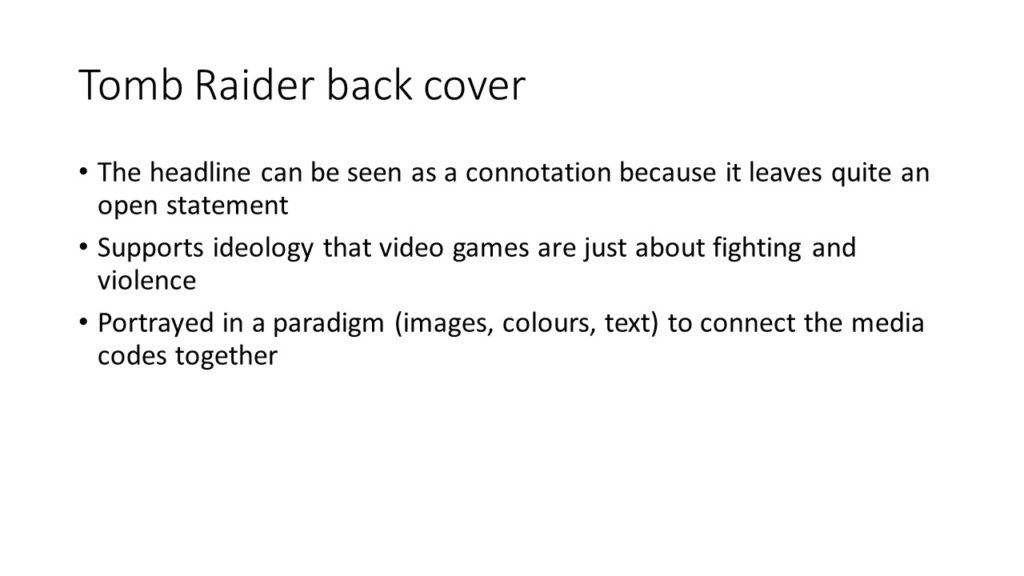
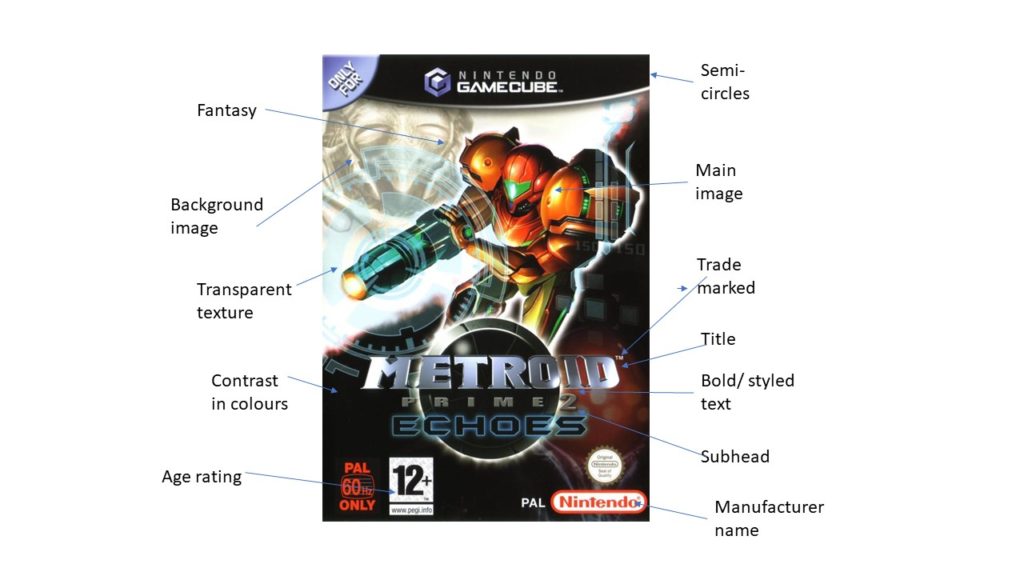

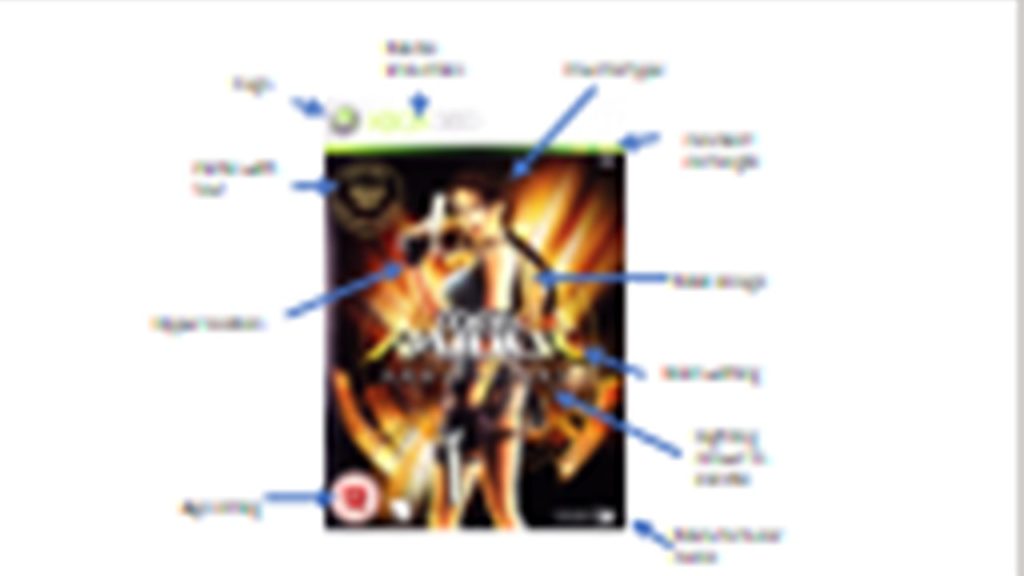

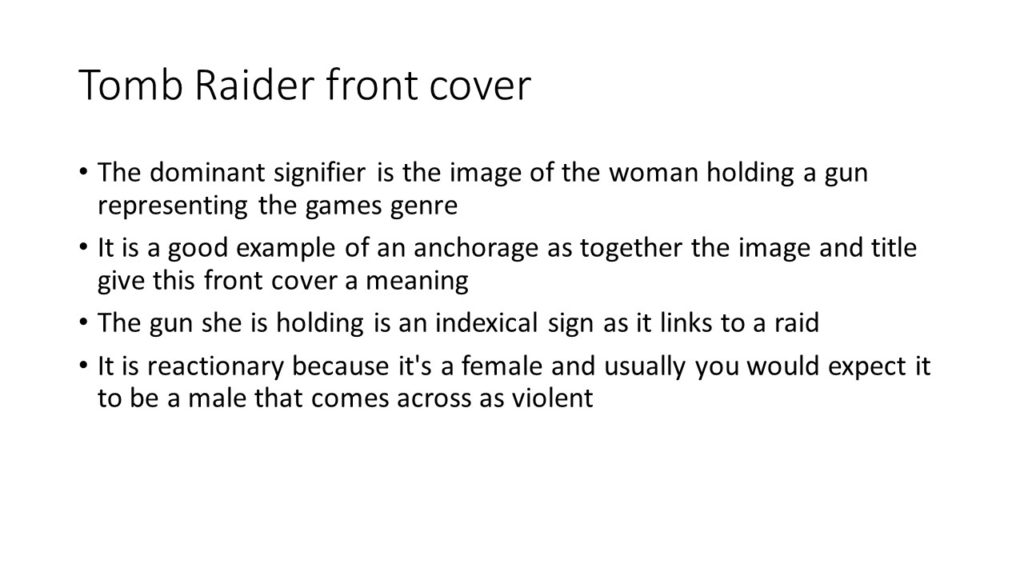







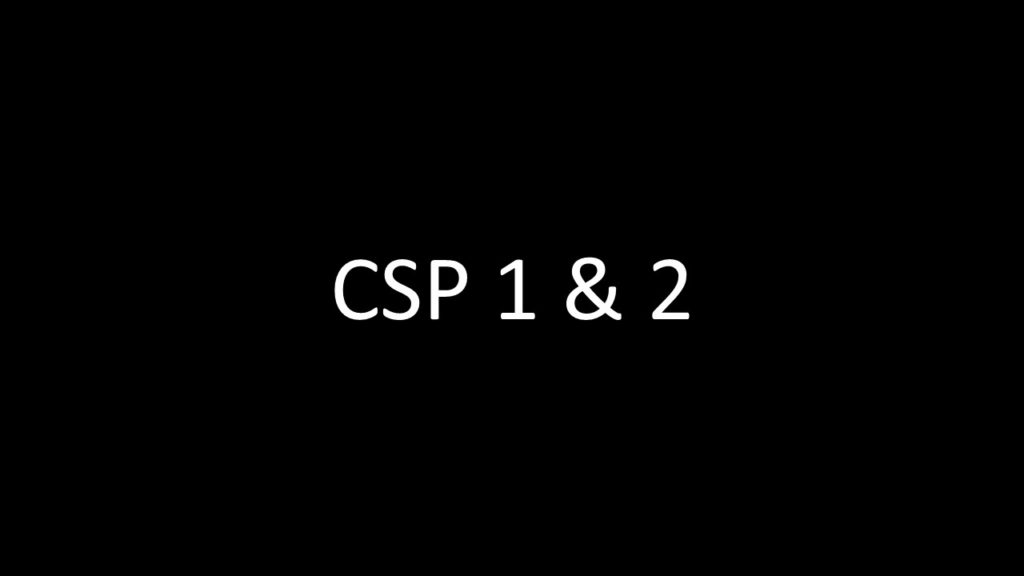
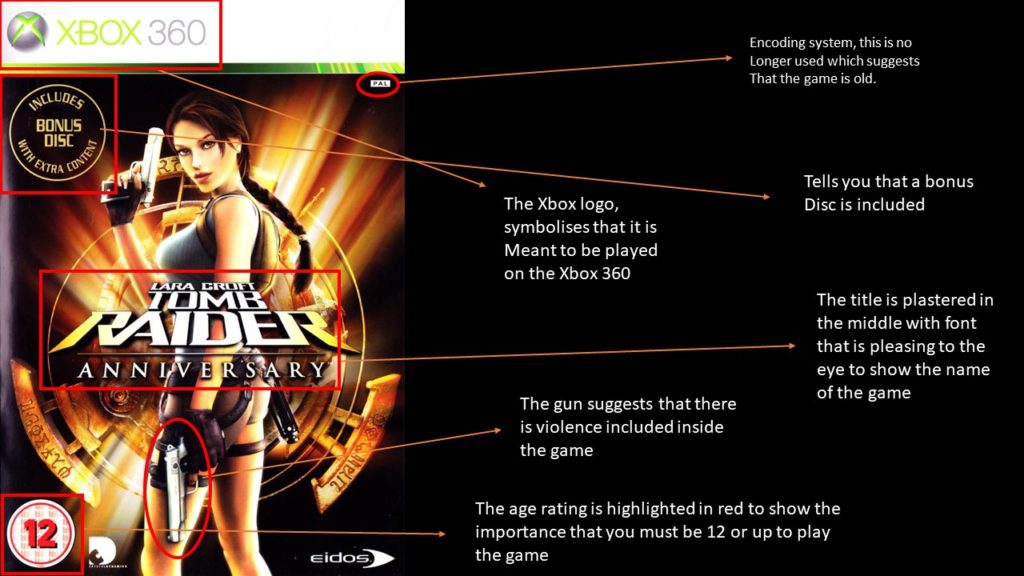
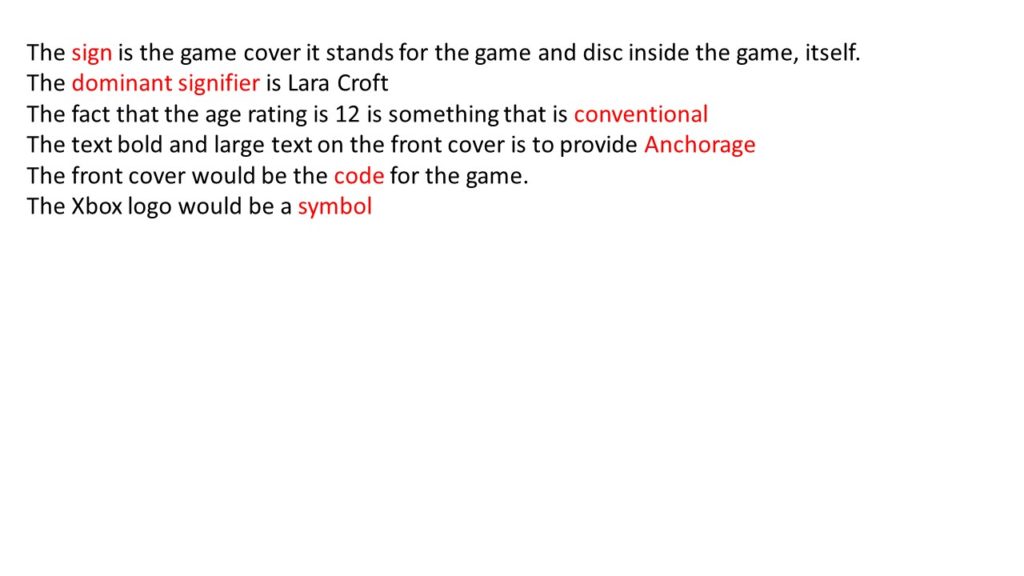

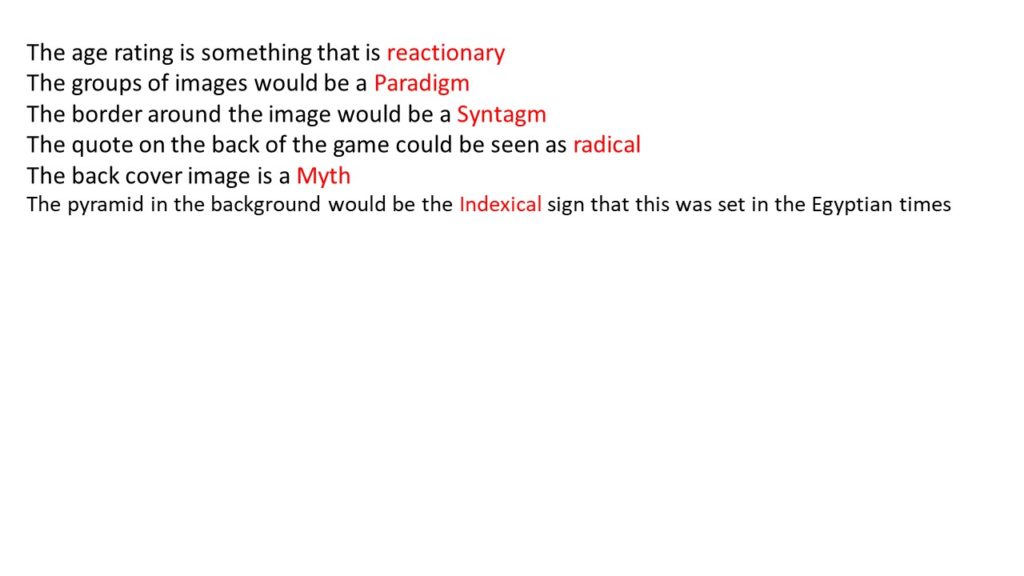
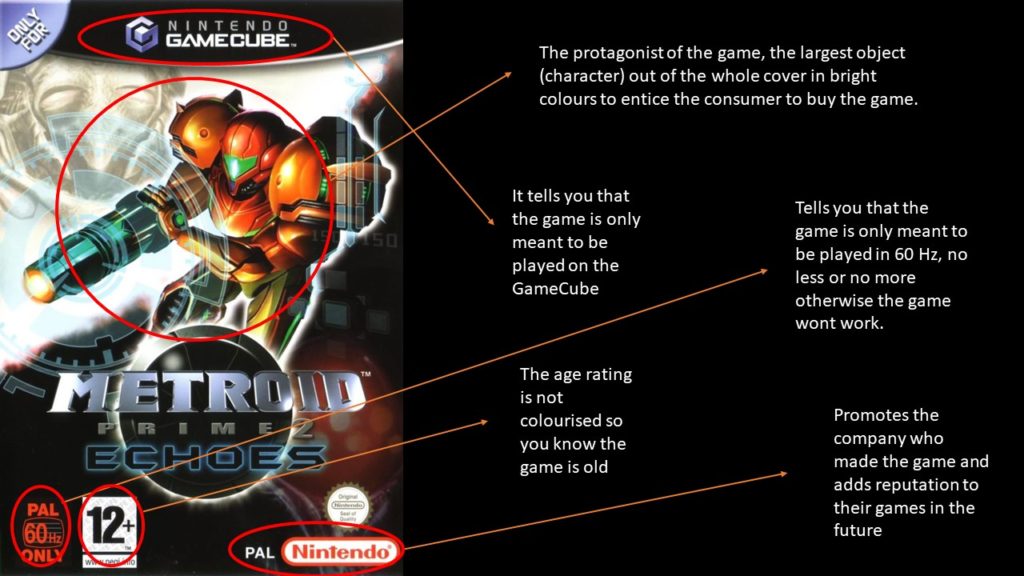
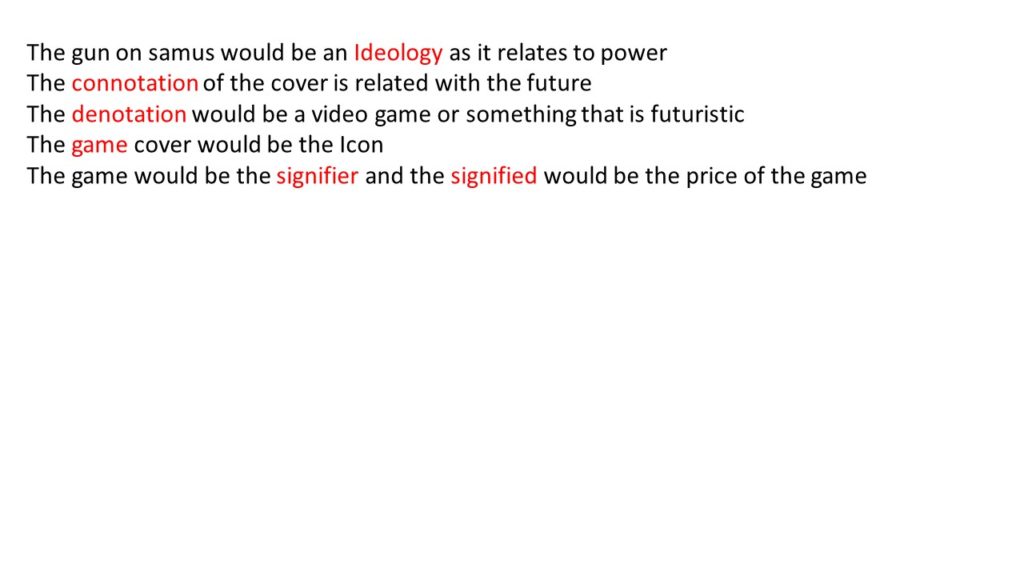

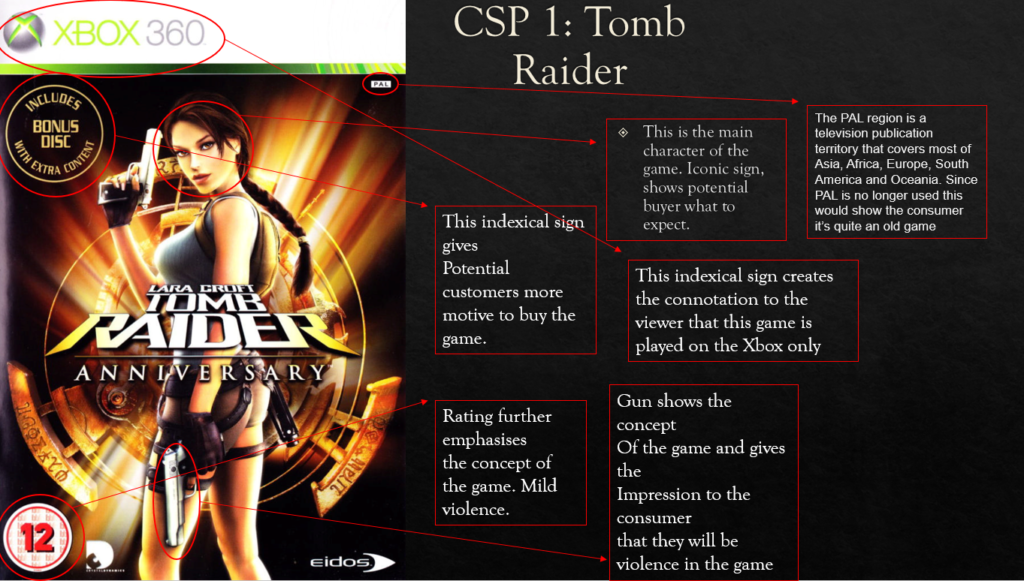
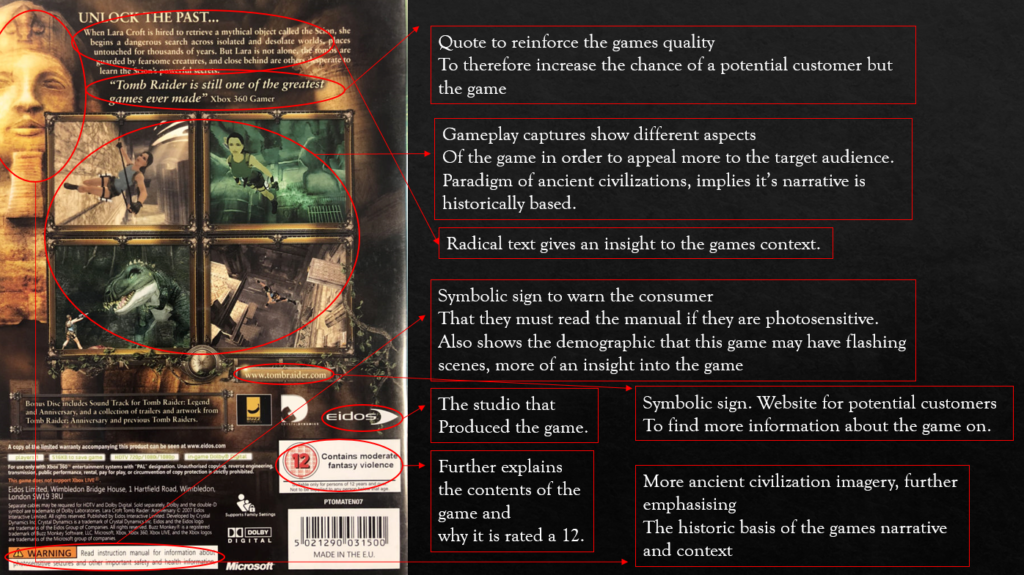


| Pose – subject positioning, stance or body language | Fourth Wall Breaks: where the subject meets gaze with audience – can be confrontational, aggressive, invitational etc… Off-Screen Gaze: upward can suggest spirituality; right-frame gaze can suggest adventure, optimism; left-frame gaze can suggest regret, nostalgia Body Language: open, closed, passive, active, strong, weak Subject positioning: positioning and angle of group shots illustrates the characters with more powerful/dominant role Proxemics: if subjects are positioned closer together, often shows close relationship |
| Mise en Scene – props, costume, setting | Prop Symbolism: props are rarely accidental, use and placement often have symbolic connotations Setting Symbolism (Pathetic Fallacy): settings and scenery are often symbolic of a characters emotions Costume Symbolism: stereotypes can be constructed through costume, helping us discover characters narrative function |
| Lighting | High-Key: lack of shadow, producing a lighter more upbeat tone Low-Key: emphasises shadow, producing a darker and serious tone Chiaroscuro: high contrast lighting eg light beams penetrating pitch black conveying hopelessness or misery Ambient: infers realism |
| Compositional Effects – distance, angle, positioning of subjects | Long Shot: implies subject is dominant of environment Closeup: intensifies character emotions or suggests impending drama Left Compositions: left of screen is generally reserved for characters whom the audience is to sympathise with Right Compositions: right screen usually reserved for unfavourable characters Open frame: suggests freedom Closed frame: suggests entrapment Tilt-up and High Eyeline: conveys power Tilt-down and Low Eyeline: conveys vulnerability |
| Post-Production Effects | Colour Control: often exaggerated for a specific connotative effect – red conveys anger; white conveys innocence; blue conveys sadness etc… High saturation: increased colour levels creates a cheery tone Desaturation: decreasing colour of an image creates a serious, sombre tone |

Achieving your Dream
By Roisin Mcgranahan
I did an interview with John Mcgranahan who has achieved his dreams and aspirations in life. I have asked some questions on how he has managed to do this. “When i was 7 or 8 my gran used to go to the auctions and buy old broken radios, speakers, tape recorders and electronic devices and she used to bring them back to her house and when I visited she asked me to fix them” so how did you progress from fixing radios in your grans house to achieving your dream as an electrician “when I was 15 I went to a open day at a technical college and sat a test to become a quantity surveyor with one of the companies that were exhibiting i was successful in the test and then again in the interview process, the company wrote to me and offered me a opportunity to become a qs i was due to start college but i actually wanted to become a electrician so i went and asked the vice principle for advice he then directed me to the electrical section of the collage to speak to the head of the technical department” so what happened next “i then sat a test to become a electrical apprentice and passed i then sat through a interview process and was given a placement with a electrical contactor” what motivated you to keep going to the point where you own your own business “it was easy for me i loved the job i was doing because it was just a job it was my hobby” did you have any hardships or obstacles during the way which could have thrown you off and how did you get through them “my only hardship was that i was paid off at the end of my apprenticeship and it was difficult to find work at the time but i wasn’t the type of person to not work so i left scotland and moved to london to find work the same week” was it difficult following through with your dream “ it wasn’t because it was the only job i knew how to do and i was good at it because i was interested in it i wanted to know every single aspect of the job from where it came from to how it got to the end user” how did you progress from that to working for yourself “ i was very independent and didn’t really like being told what to do so i decided that working fir myself was the best way to achieve my goals”
was owning a your own business what you always wanted to do “yes by the time i was 21 i was running jobs large contracts telling 15-20 electricians what to do all people who were older and experienced but i was very confident” what would be your advice to anyone who also wanted to follow their dreams “failure is the key to success you learn more from your mistakes and your failures than you do your successes” was it difficult “i worked for myself 3 times the first 2 times the business failed because of my lack of experiences and business acumen the 3rd time i was 30 and more experienced and used the experience of my last 2 failures to not make the same mistakes again:” what would you say motivated you “it comes from inside i was very independent and didn’t want to give up and had a burning desire to achieve what i wanted in life” now that have achieved your dreams do you feel fulfilled “no i still have a desire to leave a legacy and i don’t think that you ever truly feel like you have achieved success i think people who think they have achieved success is only setting themself up for failure you have to have the desire to keep going , strategizing , expanding and always reaching for the stars but never quite being able to grasp them” do you will ever fully feel fulfilled after your business “ no i dont think ill ever fully feel fulfilled because i still love what i do and its still my hobby i would do it even if i didn’t get paid for it “
do you think it’s important for people to fully love what they are doing “ i think you have to enjoy the work you do otherwise it feels like a chore if you enjoy your work it’s not a job it’s just getting paid to do something you like” what is the most important reason you think has made you achieve this dream “ i think because i loved what i was doing and was so enthusiastic about it that other people wanted me to do their jobs they could feel the enthusiasm and when your working with people you want them to feel like your happy to be there and wanting to do the job”
index-A sign with a link to its object
icon– a sign which looks like its object
symbol– a sign with a more random link to its object
Semiotics
sign– something that stands in for something else
code– symbolic tools that are used to create meaning
dominant signifier– the main representative
anchorage– words that have an image to give context
Ferdinand De Saussure
signified– an idea which is summoned by the signifier
signifier– something which stands in for something else
Roland Barthes
Myth– the most apparent quantity of signification which disfigures the meaning by validating arbitrary cultural assumptions in a similar way to the denotative sign.
Radical– something which challenges dominant ideas.
Reactionary– dominant ideas which are confirmed by something
ideology– the reinforcement of codes which are congruent with structures of power
denotation– literal or basic meaning of a signconnotation– the secondary cultural meaning of signs or “signifying signs,” which are then used as the signifiers for a secondary meaning.
Semiotics
Sign – Stands in for something else
Code – Symbolic tools used to create meaning
Convention – Accepted ways of using media code
Dominant Signifier – The main representative
Anchorage – Words with an image to provide context
Ferdinand de Saussure
Signifier – Stands in for something else
Signified – Idea being evoked by signifier
C S Pierce
Icon – A sign that looks like its object
Index – A sign that has a link to its object
Symbol – A sign that has a more random link to its object
Roland Barthes
Myth– the most apparent quantity of signification which disfigures the meaning by validating arbitrary cultural assumptions in a similar way to the denotative sign.
Radical– something which challenges dominant ideas.
Reactionary– dominant ideas which are confirmed by something
Ideology– the reinforcement of codes which are congruent with structures of power
Denotation– literal or basic meaning of a sign
Connotation– the secondary cultural meaning of signs or “signifying signs,” which are then used as the signifiers for a secondary meaning.